Israel’s Bombs Will Go On Killing Gazans Long Into the Future
Even when the war is technically declared over, thousands and thousands of unexploded munitions will remain, waiting for their chance to do harm.
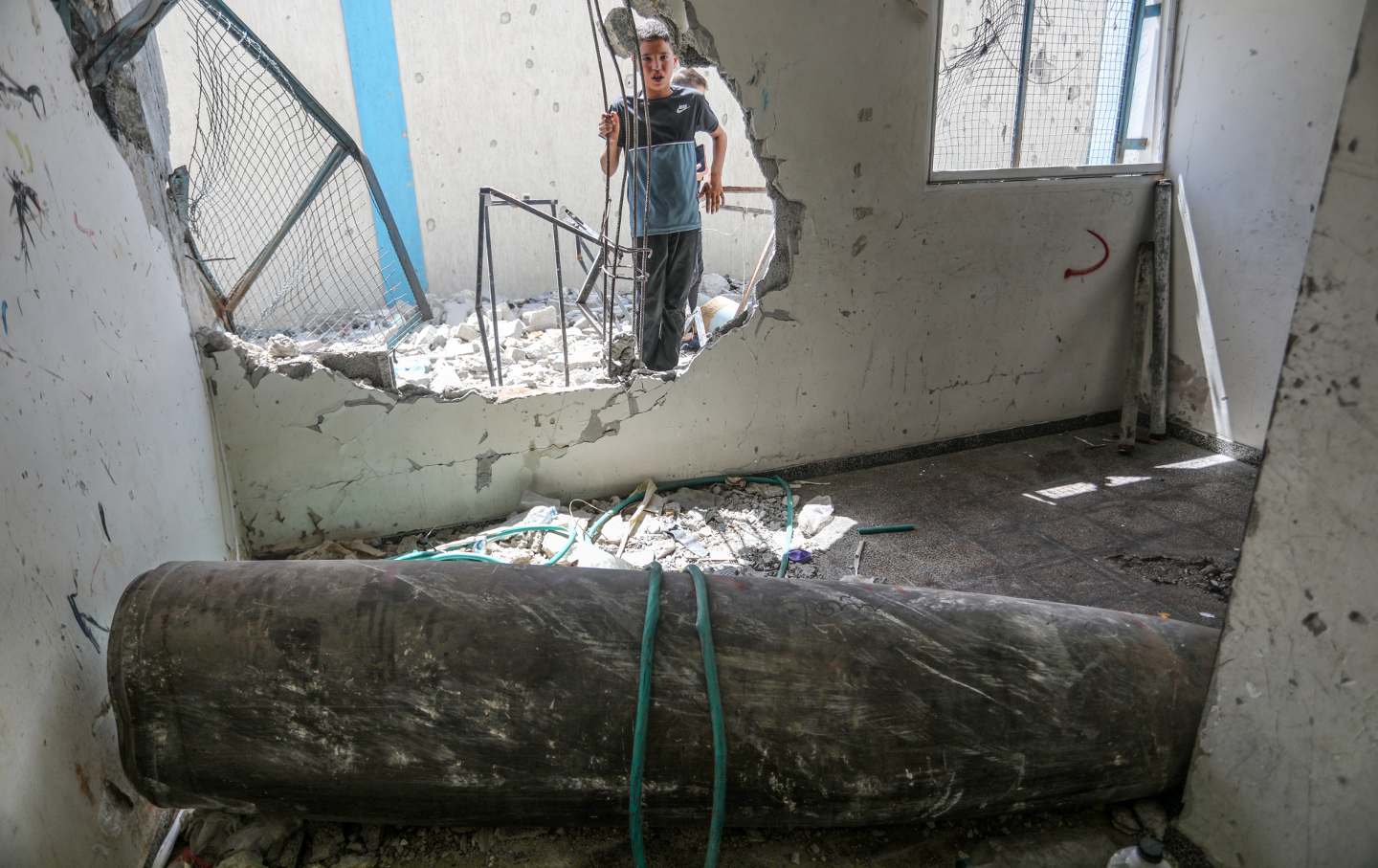
An unexploded ordnance is seen in a damaged UNRWA school in Khan Yunis, Gaza, on June 14, 2024.
(Abed Rahim Khatib / Anadolu via Getty Images)Let’s say a ceasefire were called in Gaza right now, and that Israel decided to upend its 17-year-long policy of strangle-via-siege, for the sake of respecting international law. Or, since we’ve already transgressed reality, let’s say we found ourselves in a world where Israel was no longer able to decide what sort of life people in Gaza could live. Let’s say Palestinians in Gaza had the means to clear and rebuild their lands themselves. Let’s say.
When Palestinians return to their neighborhoods, they will find within and without their homes graffitied walls, destroyed furniture, crumpled-up McDonald’s bags, rummaged-through drawers of lingerie. And they will find unexploded bombs waiting to be set off. They will often find these after it is too late.
In April, the United Nations Mine Action Service (UNMAS) issued a statement claiming that it could take, at a minimum, 14 years to clear the unexploded ordnances in Gaza.
Among the deadly weapons lurking in Gaza today are 2,000-pound bombs with 360-meter killing zones. In May, a boy named Mohammad found a canister while searching through the rubble in Khan Yunis where his home once stood. He picked up the canister and “lost his left [arm] below the elbow, and all the fingers on his right hand.” Experts say the weapon was likely an anti-tank mine, ostensibly used by Israel to destroy tunnels, and possibly American-made. These unexploded munitions are sometimes mistaken by people, especially hungry children who don’t know better, for cans of food. Consider the layers of cruelty, as Israel starves Gaza.
NPR reported that “it took four doctors and seven hours of surgery to salvage [Mohammad’s] legs.” He remains at high risk of infection and subsequent amputation, particularly amid Israel’s organized, systematic annihilation of Gaza’s medical infrastructure, as well as its refusal to allow basic medications, like the antibiotics required to prevent postoperative infections, to enter Gaza.
For those who might doubt that Israel would leave behind unexploded munitions to kill or maim, consider that among its accomplishments in Gaza to date is the creation of the largest population of pediatric amputees in human history. On each of their bodies for the rest of their lives, the occupier has asserted its right to maim, left its indelible mark.
First, let’s define some terms. The United Nations Protocol on Explosive Remnants of War defines an “explosive ordnance” as a “conventional munitio[n] containing explosives, with the exception of mines, booby traps [etc.]”—as these latter weapons are meant to explode later than at the time of deployment. To call something an “unexploded ordnance,” then, technically implies a discernment of intentions—that the weapon was used so that it would go off immediately, but didn’t. An “unexploded ordnance” is one that was “left behind or dumped by a party to an armed conflict, and which is no longer under control of the party that left it behind or dumped it.”
Several reports indicate that since October the United States has been supplying Israel with various weapons generally considered illegal under international law. Among these weapons are cluster munitions, which are “useful,” militarily, in that they have a wide radius of destruction such that fewer munitions are required to achieve the intended destructive effect. Cluster munitions are banned by over 100 countries in part because they are inherently indiscriminate. Cluster munitions and other ‘indiscriminate’ weapons feature heavily in colonial wars, like the genocide in Gaza today, where civilians constitute the overwhelming majority of those killed, including by weapons precise enough to land where they’re dropped, because the occupying power’s intention is to kill civilians, (The notion of a discriminate versus an indiscriminate weapon, then, is beside the point, and a distraction from a warring party whose enemy is an entire people, whom they don’t see as people at all.)
While the first use of cluster bombs dates back to at least World War II, the weapon is perhaps most notoriously associated with the Vietnam War, when the United States dropped some 270 million cluster bombs on neighboring Laos to make it, per capita, the “most bombed country” in the world. Of the bombs America dropped on Laos in the 1960s and ’70s, around 30 percent remain undetonated today. Since the official end of the war, around 20,000 Laotians—40 percent of them children—have been killed or injured by “unexploded items.” The risk these ordinances pose has also rendered large areas of farmland unusable.
UNMAS’s estimate that it will take 14 years to clear all the unexploded ordnance in Gaza is flawed for many reasons. For one, the estimate assumes that the genocide ended at the time of the statement’s release, that 100 trucks designated for clearing debris are available for each day of those 14 years, and that the entry of these trucks and all other requisite material and human resources remains unimpeded too for that extended duration. But the estimate also posits that just 10 percent of explosive ordnances used by Israel for the last nine months “fail[ed] to function”—which is to say, explode at the time of impact. Depending on the weapon, Israeli munition failure rates (called “dud” rates in military-speak) can be much higher. The “failure rates” of the cluster bombs used by Israel against Lebanon in 2006 were estimated by UNMAS to be as high as 50 percent and by other organizations involved in munitions clearance to be as high as 70 percent in some areas.
Given how these weapons were used, “failure” isn’t the right word. Israel culminated its concerted targeting of civilian infrastructure across the country by dropping millions of cluster munitions on southern Lebanon. Ninety percent of these were fired in the final 72 hours before a ceasefire was called, according to the UN. Many of the munitions were “well past their shelf life…. The Israelis knew how old they were and they knew that they weren’t going to work,” said the Lebanon program manager for the United Nations Mine Action Coordination Center, in 2007. Except, if the Israelis knew the weapons were expired, then wasn’t the high dud rate the point? These weapons weren’t “not working,” just working differently than advertised. Israel has for decades used cluster bombs functionally as mines dropped from the sky, intended for after the ceasefire, in Lebanon’s case when hundreds of thousands of displaced people returned home.
International pressure to ban the use of cluster bombs increased significantly following Israel’s 2006 war on Lebanon. The Convention on Cluster Munitions, which bars their use, went into force in 2010. It has been ratified by 112 countries, including Lebanon, Laos, and Palestine. Neither the United States nor Israel—both producers of these munitions—is party to the convention, the former citing their “clear military utility,” the latter following in lockstep, each sitting on its own significant cluster bomb stockpiles, each carried by economies dependent on imposing, manufacturing, and monetizing premature death.
In 2007, Time published a story titled “The ‘toys’ that kill in Lebanon.” The munitions Israel had “left behind” were often ambiguously shaped, unassuming—which explains why curious children picked them up, losing limbs and often their lives. Unexploded weapons reflect, in this instance, an unsuccessful occupier’s attempt to continue its attack on the people of the land. The abiding possibility of stepping on an unexploded ordnance mutates a person’s relationship with their land, imposing a wariness that precedes everything else. Children growing up in this aftermath learn to fear as they learn to play. It functions simultaneously as both a reminder and an assertion of empire’s steady grip, the lurking specter of its omnipresence: You dared to think you could exist beyond us. Of course, the hold of cluster bombs isn’t restricted to the psyche—a cluster bomb is a material thing, and exploding a child is an act of sustained war.
As an arm of its genocide, Israel is committing ecocide, the deliberate destruction of Gaza’s natural environment. The impacts are multivalent. Gaza’s agricultural sector comprises a significant part of its economy. A report released by the United Nations Satellite Centre in January 2024 showed “a substantial decline in the health and density of crops” compared to the previous six seasons, starting in 2018. Israel has “comprehensively targeted” Gaza’s olive trees, destroyed its main sources of vegetable production, and “executed” “entire groups of livestock farms.” One of Israel’s early targets was Gaza’s strawberry fields, known as its “red gold” and harvested every November, partially for export to the West Bank and Israel. Despite the significant barriers imposed by Israel in the past, the strawberries had for decades allowed many in Gaza to generate some kind of income.
Whether or not the strawberries and other crops will grow back depends in part on the topsoil. When an unexploded ordnance detonates, whether the detonation is controlled or not, the blast displaces this topsoil, with significant long-term ecological consequences, including on biodiversity. Demining also requires topsoil dispersal and, “depending on the ecosystem, it can take 1,000 years to generate just [three] centimeters of topsoil.” Whether the crops grown on this earth are safe to eat in the near term is a different question, and one that will ultimately take generations to answer.
Palestine’s representative to the International Atomic Energy Agency has called for an investigation into whether Israel is using depleted uranium, which has a half-life of 4.5 billion years, against Gaza. In both Lebanon and Gaza, Israel has been using white phosphorus, a highly flammable agent that when fired hangs in narrow plumes of bright white smoke, like a toxic weeping willow suspended midair. White phosphorus’s burn patterns are also distinctive; upon contact with human skin, it penetrates, all the way to bone or until the oxygen runs out. White phosphorus pollutes the air and disrupts the soil’s pH. In southern Lebanon, entire fields of crops have been destroyed because of it; olive trees are the most affected, their harvest coated in toxins. Soil samples have been sent out for testing, to determine how the land has been affected by Israeli bombs, and what can be done about it. In Gaza in late June, starving children who resorted to eating tree leaves were brought to Kamal Adwan Hospital with signs of poisoning. Israel regularly uses Gaza as a weapons testing lab. Doctors have been reporting new, unfamiliar patterns of injury; the long-term biohazardous consequences of these unknown munitions remain similarly unclear.
Already, as a result of Israel’s bombing campaigns of 2022, 2021, 2018, 2014, 2008, and so on, as well as the repeated targeting of Gaza’s public health infrastructure, its earth was laced with toxins whose detrimental effects on its people will continue to be detected, slowly, for generations. On October 7, the head of UNMAS was already in Gaza, working to continue to clear the unexploded ordnances left there by Israel in 2021. As unexploded munitions erode, they release hazardous chemicals into the earth and groundwater. Even before October, 97 percent of the water in Gaza was unfit for human consumption. In a conversation with Al Jazeera from 2021, a man named Muhammad from northern Gaza said he’d struggled to grow a garden in his home because of the water’s chemical composition. “All my plants dried up and died because of high water salinity and high chloride,” he said. Muhammad said he had been unable to use the municipal tap water for years. He then posed a question that answers itself: “If the plants have died because of this water, what will it do with people’s bodies?”
Israel’s war against Palestinian life targets the people and the land—the land, to weaponize it against the people. In Gaza today, Israel has targeted the desalination plants, the wells, the water tanks, and the engineers working to rebuild these (which is to say, undermining Israel’s efforts). They have targeted individuals trying to collect water for their families. If or when there’s a ceasefire, the water the people are finally able to reach could kill them, too.
Popular
“swipe left below to view more authors”Swipe →Per the UN definition, an unexploded ordnance becomes an “explosive remnant of war” once a conflict is technically over. I hesitate to use this term for Israel’s wars, because “remnants” implies violence positioned in the past. It suggests that its trickles into the present are a spillover unintended by the party responsible once “done is done.” For Israel in Palestine, done is never done: Settler colonialism’s aggressive violence against the people of the land is structural, and it is relentless. In the so-called day after, Israel will continue its war on Palestine’s children, its future, as it has for generations. The shapes and means will continue to morph as the tools and circumstances (and state sponsors) allow. We are, at the time of this writing, over 100 days past the estimates of the UNMAS report.
The final six lines of Palestinian poet Fadwa Tuqan’s poem “The Deluge and the Tree,” read, “When the Tree rises up, the branches / Shall flourish green and fresh in the sun / The laughter of the Tree shall leaf / Beneath the sun/ And birds shall return / Undoubtedly, the birds shall return.” The trees in Gaza, those which remain rooted, continue to tunnel into the soil of a land called Palestine that Israel has worked to make unfit for life. And the children who pick the tree’s fruits, who pluck ripe strawberries off tiny stems, who drink from the wells and swim in Palestine’s sea, suffer the consequences of a people unwilling to abandon their land. They will, as the people of the land, develop certain cancers at rates far higher than expected for the average person living on this burning earth. And they will—so long as Israel’s siege over Gaza persists—regularly be denied access to medical treatment, often until it’s too late. Every day that passes is many more futures denied, and we are liable, before whatever good we believe in, for all of it.
And every day they have, the people of Gaza, of Palestine—who are of this writing rebuilding Al-Shifa hospital for the second time since October, who have set up health clinics in tents to try to bypass the death machine—their laughter will leaf beneath the sun. And their soil will, after some years, turn over, and the concentrations of the free radicals, half-life after half-life, will steadily approach zero. It will take time, and time, as every occupier knows, is on the native’s side.
We cannot back down
We now confront a second Trump presidency.
There’s not a moment to lose. We must harness our fears, our grief, and yes, our anger, to resist the dangerous policies Donald Trump will unleash on our country. We rededicate ourselves to our role as journalists and writers of principle and conscience.
Today, we also steel ourselves for the fight ahead. It will demand a fearless spirit, an informed mind, wise analysis, and humane resistance. We face the enactment of Project 2025, a far-right supreme court, political authoritarianism, increasing inequality and record homelessness, a looming climate crisis, and conflicts abroad. The Nation will expose and propose, nurture investigative reporting, and stand together as a community to keep hope and possibility alive. The Nation’s work will continue—as it has in good and not-so-good times—to develop alternative ideas and visions, to deepen our mission of truth-telling and deep reporting, and to further solidarity in a nation divided.
Armed with a remarkable 160 years of bold, independent journalism, our mandate today remains the same as when abolitionists first founded The Nation—to uphold the principles of democracy and freedom, serve as a beacon through the darkest days of resistance, and to envision and struggle for a brighter future.
The day is dark, the forces arrayed are tenacious, but as the late Nation editorial board member Toni Morrison wrote “No! This is precisely the time when artists go to work. There is no time for despair, no place for self-pity, no need for silence, no room for fear. We speak, we write, we do language. That is how civilizations heal.”
I urge you to stand with The Nation and donate today.
Onwards,
Katrina vanden Heuvel
Editorial Director and Publisher, The Nation
More from The Nation
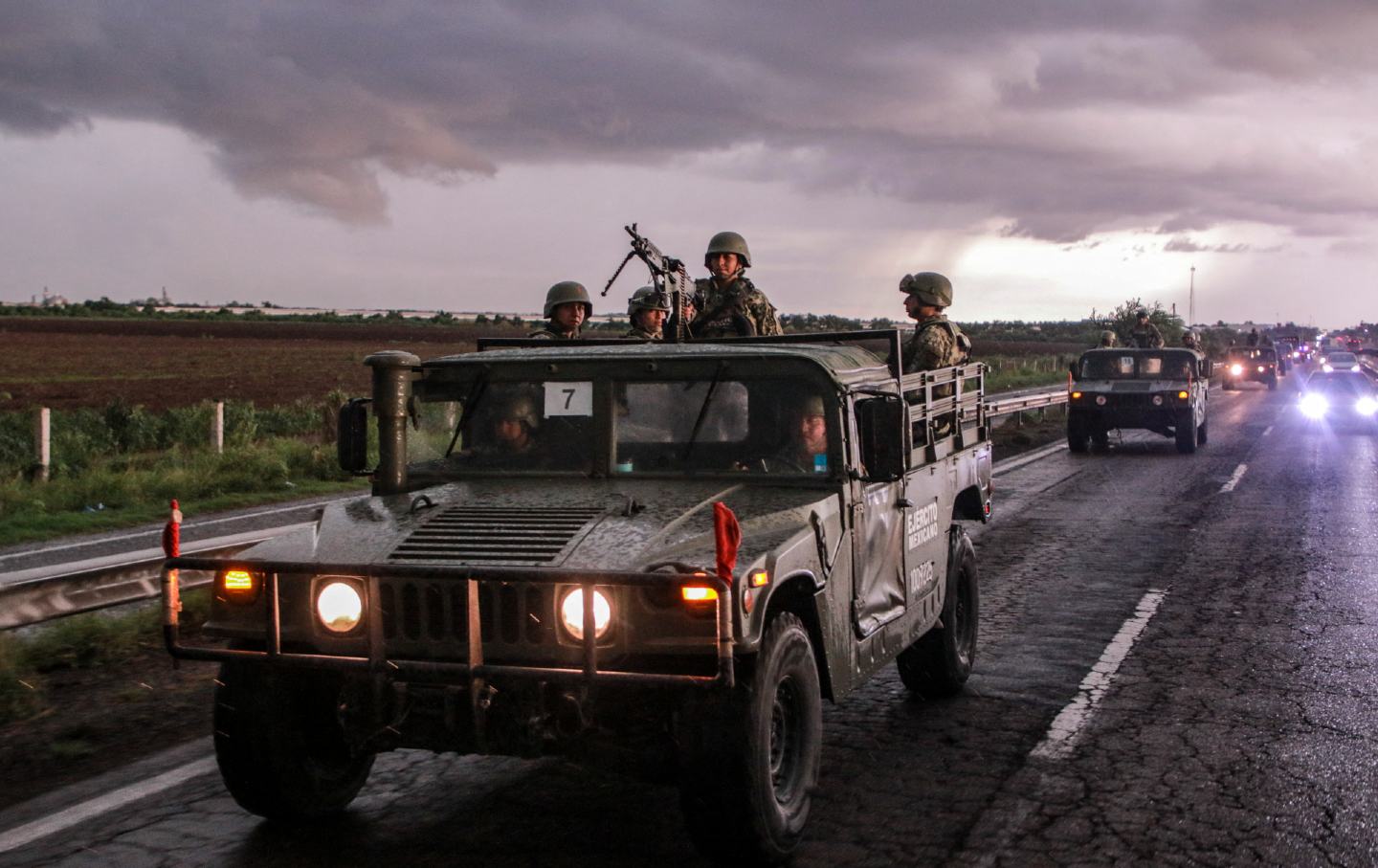
With Trump in the White House, Can Mexico Avoid Making the Drug War even Bloodier? With Trump in the White House, Can Mexico Avoid Making the Drug War even Bloodier?
Mexico’s new president, Claudia Sheinbaum, has a plan to combat drug trafficking, but she has a problem: Donald Trump.
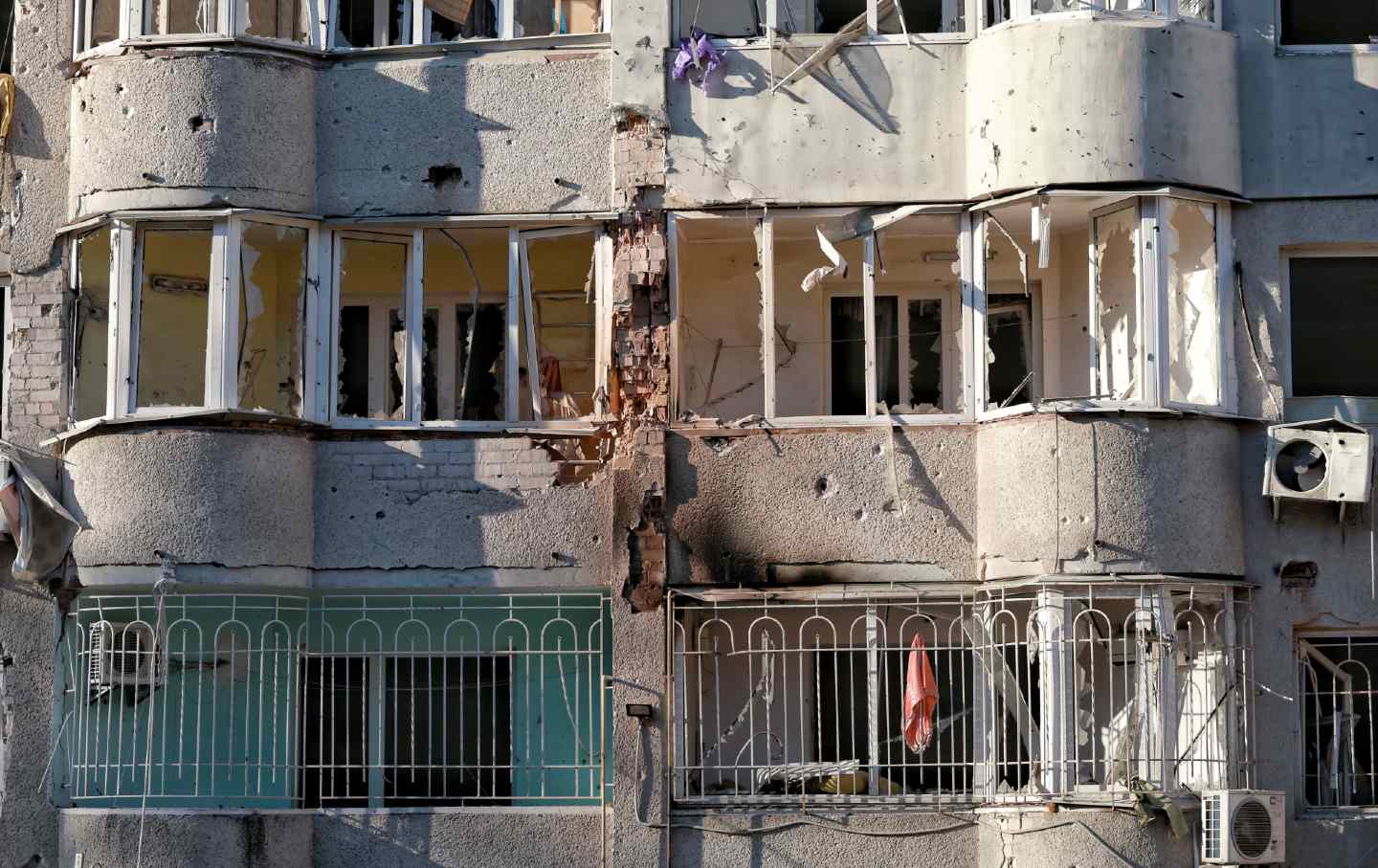
Biden’s Mindless Escalation Is a Final Betrayal of Ukraine Biden’s Mindless Escalation Is a Final Betrayal of Ukraine
Instead of preparing for inevitable negotiations, the outgoing president adds fuel to the fire.
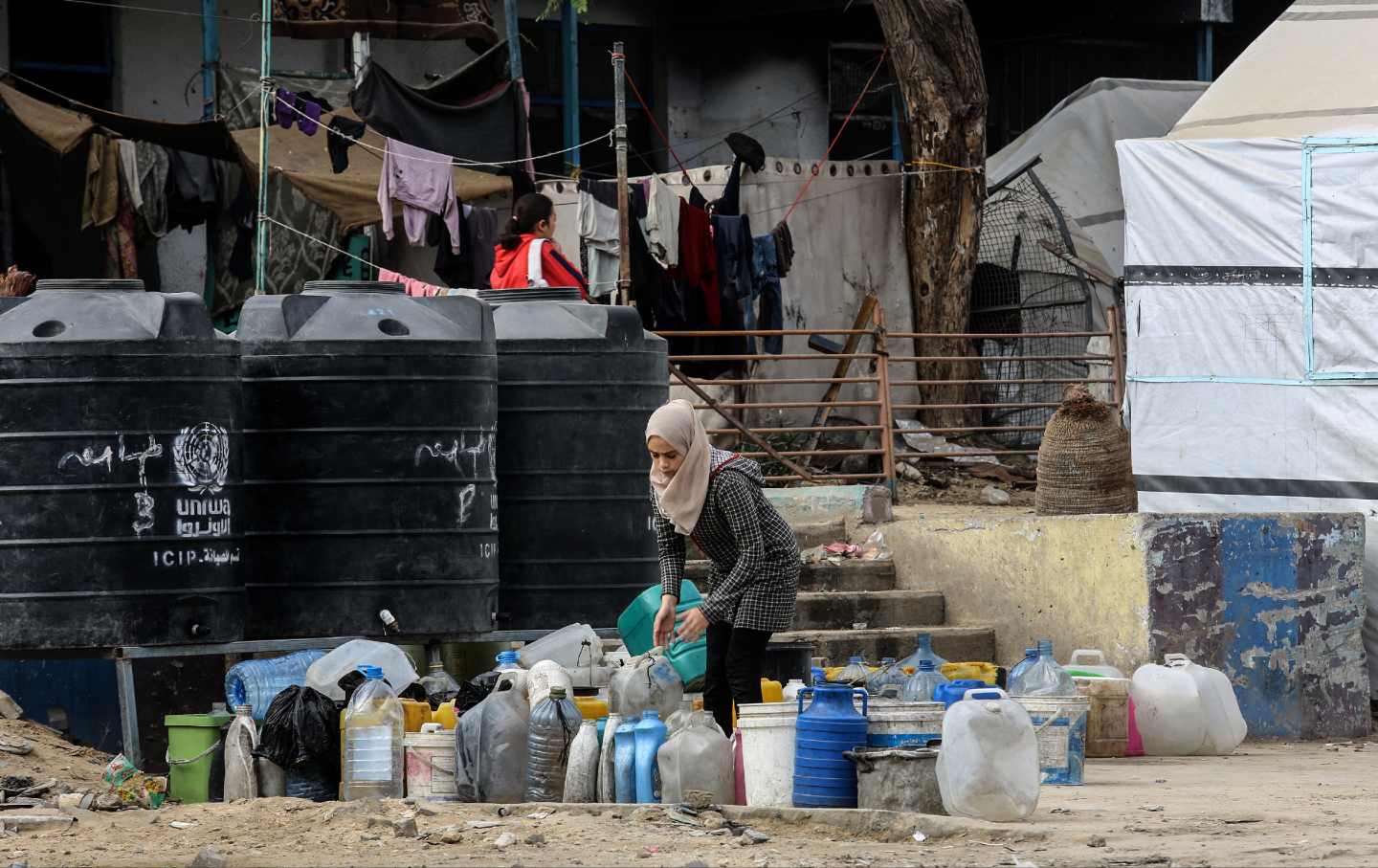
The Women Who Remain in Gaza Will Never Leave Me The Women Who Remain in Gaza Will Never Leave Me
I survived eight terrible months of genocide. Now, I’m in exile—but I can’t stop thinking about the women who have remained.

Trump’s Second Presidency Will Only Accelerate America's Imperial Decline Trump’s Second Presidency Will Only Accelerate America's Imperial Decline
Trump is on track to bring a hasty end, silent or otherwise, to an “American Century” of global dominion.
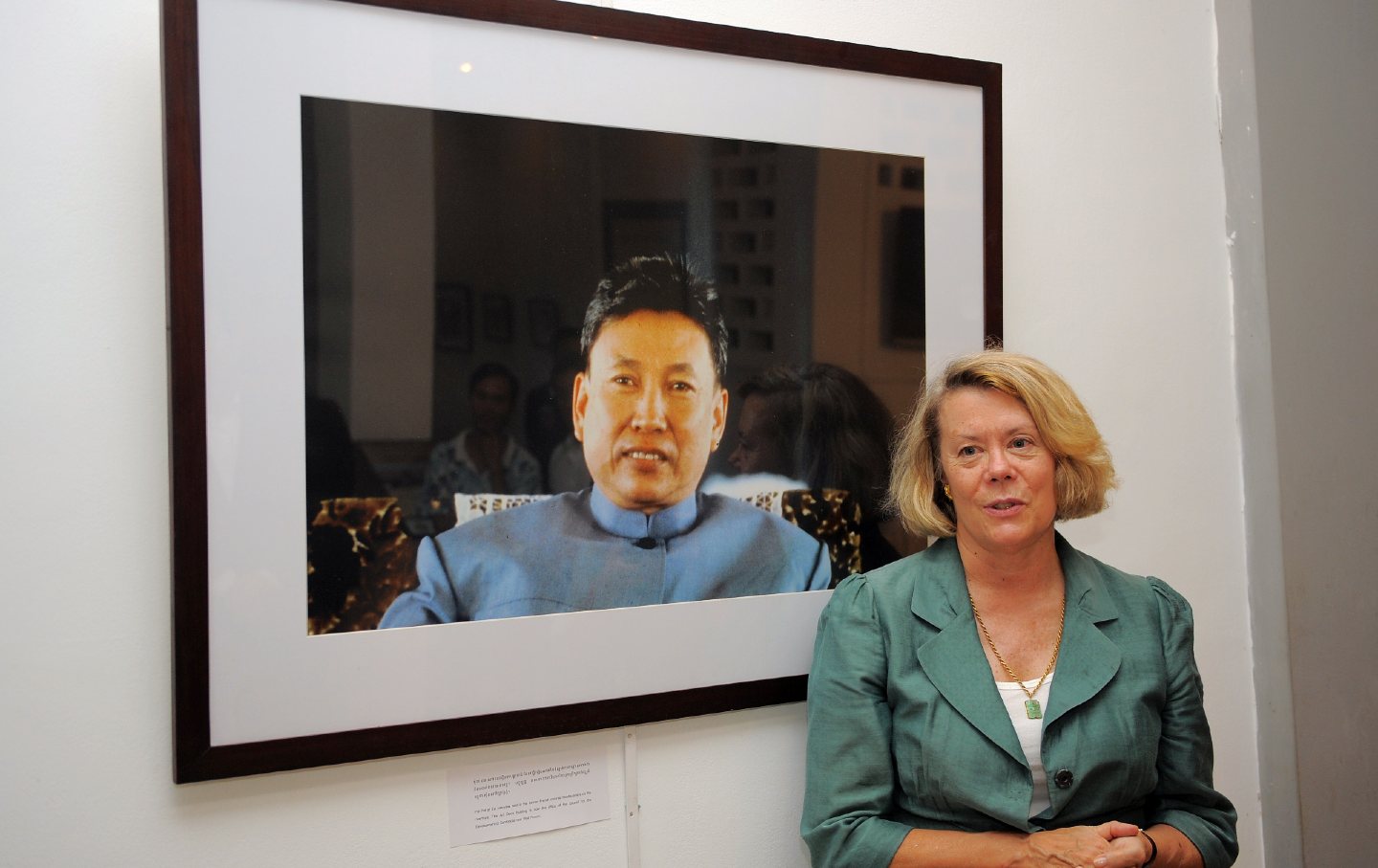
Warning From the Past Warning From the Past
In a new film, journalists confront a dictator.

The Case Against Joe Biden for Complicity in Genocide The Case Against Joe Biden for Complicity in Genocide
The ICC has applied for an arrest warrant for Benjamin Netanyahu. But Israel’s assault on Gaza has been made possible by US support.


